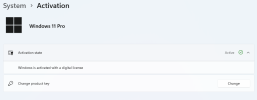Sorry if I'm missing the point of this thread but in answer to the title, I do this;
- During the install of Windows 11, allow the PC to connect to the internet.
- Shortly after, you will be asked to connect to your MS account or create a new one.
- Enter a non-accessible email address (I use
no@thankyou.com).
- Enter a password anything you want but don't leave it blank (I use whatever appears after I've run my hand over the keyboard!)
- Hit enter. You will then see "Something went wrong and you will then be asked what user name you want to use to set up a local account.
This has worked for me when setting up new PC's for clients for the last 5 months at least.
Again, I apologize if this is already common knowledge here...I didn't have time to read all of the input in the thread.


